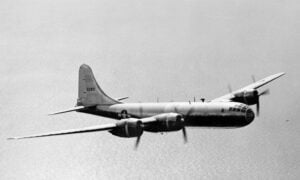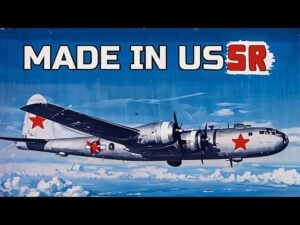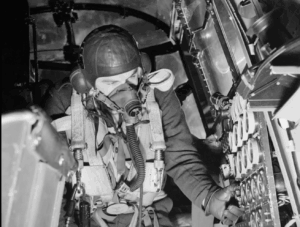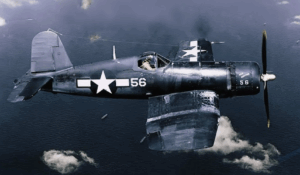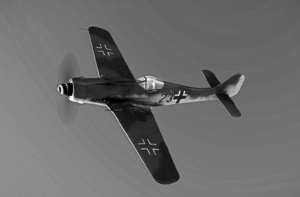5 U.S. Aircraft That Were The Most Dangerous to Fly

Hacker's Misadventures in Scale Modeling / YouTube
During World War II, the United States produced a wide variety of aircraft, each designed to meet specific combat roles and challenges. While many of these planes played crucial roles in achieving victory, some came with serious risks to their crews. Engineering challenges, rapidly advancing technology, and the demands of war often made certain aircraft hazardous to operate. We examine five U.S. aircraft from the era that were known for their danger to pilots and crew.
Curtiss SB2C Helldiver

The Curtiss SB2C Helldiver was a carrier-based dive bomber that replaced the earlier Douglas SBD Dauntless. While it eventually proved effective in combat, the Helldiver earned a reputation for being difficult and dangerous to fly. Its nickname, “The Beast,” reflected both its ungainly appearance and the challenges it posed to pilots.
The Helldiver’s handling issues began during development. Early prototypes suffered from structural weaknesses, especially in the tail section, which led to instability during flight. Pilots also reported problems with control at lower speeds, which made landings on aircraft carriers particularly perilous. These issues resulted in numerous accidents during training and combat operations. Additionally, the Helldiver required significant maintenance, and its complex systems often malfunctioned, further increasing the risks for crews. Despite these flaws, the aircraft saw widespread use, especially in the Pacific Theater, where its bomb load and range made it valuable for attacking Japanese targets.
Martin B-26 Marauder

The Martin B-26 Marauder was a medium bomber introduced early in the war. Known for its speed and sleek design, the Marauder was initially plagued by a high accident rate, earning it grim nicknames like “Widowmaker.” Its trouble stemmed from the high wing loading, which resulted in faster takeoff and landing speeds compared to other bombers. Many inexperienced pilots struggled with the demands of operating the aircraft.
In its early service, the Marauder’s short wingspan combined with powerful engines made it unforgiving during takeoff and landing. A slight error could result in a crash, and training squadrons faced frequent accidents. Over time, design improvements and better pilot training reduced its accident rate, and the Marauder eventually gained a reputation for being a reliable and durable aircraft. However, its early history left a lasting impression as one of the most dangerous U.S. aircraft to fly during the war.
Boeing B-17 Flying Fortress

Although the Boeing B-17 Flying Fortress is celebrated for its durability and ability to bring crews back from heavily damaged missions, it was not without its dangers. These dangers were not due to design flaws but rather the harsh conditions in which the aircraft operated. Flying bombing missions over heavily defended enemy territory exposed B-17 crews to constant threats.
The missions often involved flying in tight formations at high altitudes for hours, leaving crews vulnerable to German fighters and anti-aircraft fire. The bomber’s thin aluminum skin offered little protection against incoming fire, and oxygen systems sometimes failed in the freezing temperatures of the stratosphere. Additionally, crew members operated in cramped conditions, surrounded by complex machinery that could become lethal in the event of a crash or combat damage. Despite these risks, the B-17’s legendary resilience earned it the admiration of the crews who flew it.
Consolidated B-24 Liberator

The Consolidated B-24 Liberator was one of the most widely produced aircraft of World War II, but its design made it particularly hazardous for crews. Known for its long range and heavy payload capacity, the B-24’s innovative design also introduced significant challenges. The aircraft’s lightweight construction, while necessary for its performance, made it more vulnerable to damage than the B-17.
The B-24’s fuel tanks, located in its thin wings, were highly prone to catching fire if hit. Its narrow fuselage made movement within the aircraft difficult, especially during emergencies. Crews often struggled to escape the bomber when it was damaged or shot down, and survival rates for B-24 crews were alarmingly low compared to other bombers. Despite these dangers, the B-24’s versatility made it a key part of the Allied bombing campaigns in Europe and the Pacific.
Lockheed P-38 Lightning

The Lockheed P-38 Lightning was a distinctive twin-engine fighter that served in multiple theaters during the war. While it was highly advanced for its time and excelled in many roles, the P-38 had its share of dangers. Pilots faced challenges stemming from its complexity and unique design.
The aircraft’s twin-engine configuration introduced complications. If one engine failed, managing the aircraft became difficult, especially for inexperienced pilots. Another issue was compressibility—a phenomenon that occurred when the P-38 approached high speeds in a dive, causing the controls to lock up. Early versions of the P-38 lacked effective countermeasures, leading to several fatal crashes. Modifications improved its performance over time, but the P-38 remained a demanding aircraft to operate, particularly in combat situations where pilots pushed it to its limits.















